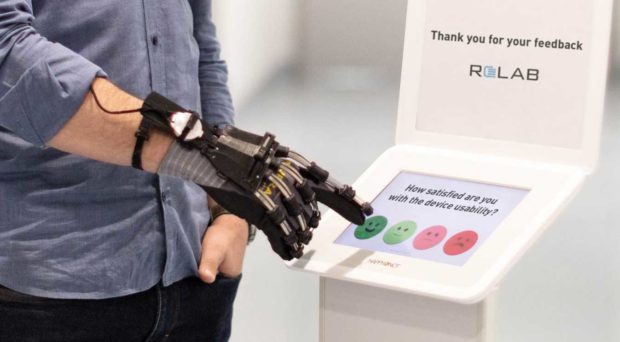
Wearable robotics has gained increasing attention over the past years. The human-centered design paradigms for these wearable robotics aim to promote technology acceptance by better considering the needs of the end-user. Through workshops, focus groups, and participatory design sessions, developers strive to meet user needs and develop the next-generation wearable robotics technology that can improve the quality of life of millions. However, low technology acceptance and adoption of wearable robots for sensorimotor therapy, assistance in daily life, work-related injury prevention, or human augmentation indicates that state-of-the-art devices still underperform in real-life usability.

While there is a consensus that usability is key, publications on dedicated and systematic usability studies combining quantitative and qualitative evaluation are scarce (Reinkensmeyer 2019). The evident lack of standards on how to best evaluate usability in wearable robotics directly affects research, technology maturation, and the ability to compare results and technologies (Shore 2018, Armansdottir et al. 2020). Thus, we believe that it is of fundamental importance to understand current development and evaluation practices in more detail, identify their limitations, and learn which evaluation methods have helped to generate solutions with high usability.
…technological solutions that not only meet the target user’s needs, but may even exceed their expectations.
With a survey devoted to usability evaluation in wearable robotics, we aim to investigate how usability is defined, how developers perceive its importance, how the evaluation focus may shift during technology maturation, and how target-user feedback is acquired. With these insights, we aim to guide researchers/developers in the process of identifying the right measures for their specific context of use, and consequently, support ongoing endeavors in establishing benchmarking practices.
We believe that a more structured and comparable evaluation will enable a genuinely human-centered design of wearable robots and hopefully contribute to the development of technological solutions that not only meet the target user’s needs, but may even exceed their expectations.
Comments